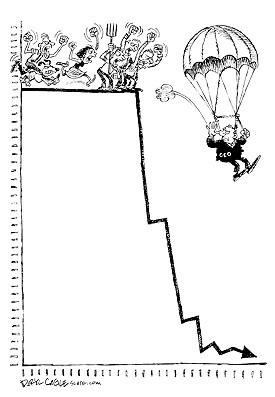(Source: AP)
The head of the Environmental Protection Agency wants to limit emissions along the nation’s coastline and within its seaports, just as the agency does along highways, with tougher pollution standards on large commercial ships.

EPA Administrator Lisa Jackson said Monday that the United States and Canada have applied to the International Maritime Organization to create a 230-mile emissions control area around much of their coastline.
The move is intended to ensure the shipping industry does its part to improve the air quality of major seaport communities. Ships moving through the zone would be subject to the tougher emissions standards.
“This is an important and long overdue step to protect the air and water along our shores,” Jackson said, speaking in front of a row of cranes at a press conference in Port Newark.
Jackson estimated that 40 of the 100 largest U.S. ports are located in metropolitan areas that fail to meet federal air quality standards. One of them is the Port Newark facility, which is part of the Port of New York and New Jersey — the East Coast’s largest port complex.
The EPA estimates that 90 percent of the ships carrying cargo in and out of U.S. coastal ports are based in other countries.
Ships operating in the proposed zone would face stricter limits on the sulfur content of their fuel beginning in 2015, and new ships would be required to incorporate advanced emission-control technologies beginning in 2016, Jackson said. Sulfur content is directly related to the soot, or pollution, emitted after fuel is burned.

Image Courtesy: EPA - OGVs Are a Big Problem: US Ports and Nonattainment Areas
Jackson made the announcement at a news conference with the Coast Guard and other federal and state officials. EPA estimates the new emission-control technology will cost shipping companies $3.2 billion. Jackson said that translates into an increased cost of about 3 cents for each pair of sneakers shipped into the United States.
Gov. Jon Corzine welcomed the proposal and recalled sending Jackson to Washington, D.C., to lobby for it when she headed New Jersey’s Department of Environmental Protection.
 Not surprisingly, officials from the Canadian and Ontario governments have followed the U.S. government’s leadby officially rejecting the restructuring plans of General Motors and Chrysler. The Canadian officials said the automakers’ current plans do not go far enough and will not be certified as they are. In fact, they’re basically copying and pasting the new deal for automakers announced by the U.S. government today, saying that GM has 60 days to redo its plan while receiving a portion of the C$3 billion it requested and Chrysler has 30 days to finalize its partnership with Fiat while receiving C$250 million of the C$1 billion it requested. Click here read more.
Not surprisingly, officials from the Canadian and Ontario governments have followed the U.S. government’s leadby officially rejecting the restructuring plans of General Motors and Chrysler. The Canadian officials said the automakers’ current plans do not go far enough and will not be certified as they are. In fact, they’re basically copying and pasting the new deal for automakers announced by the U.S. government today, saying that GM has 60 days to redo its plan while receiving a portion of the C$3 billion it requested and Chrysler has 30 days to finalize its partnership with Fiat while receiving C$250 million of the C$1 billion it requested. Click here read more.










